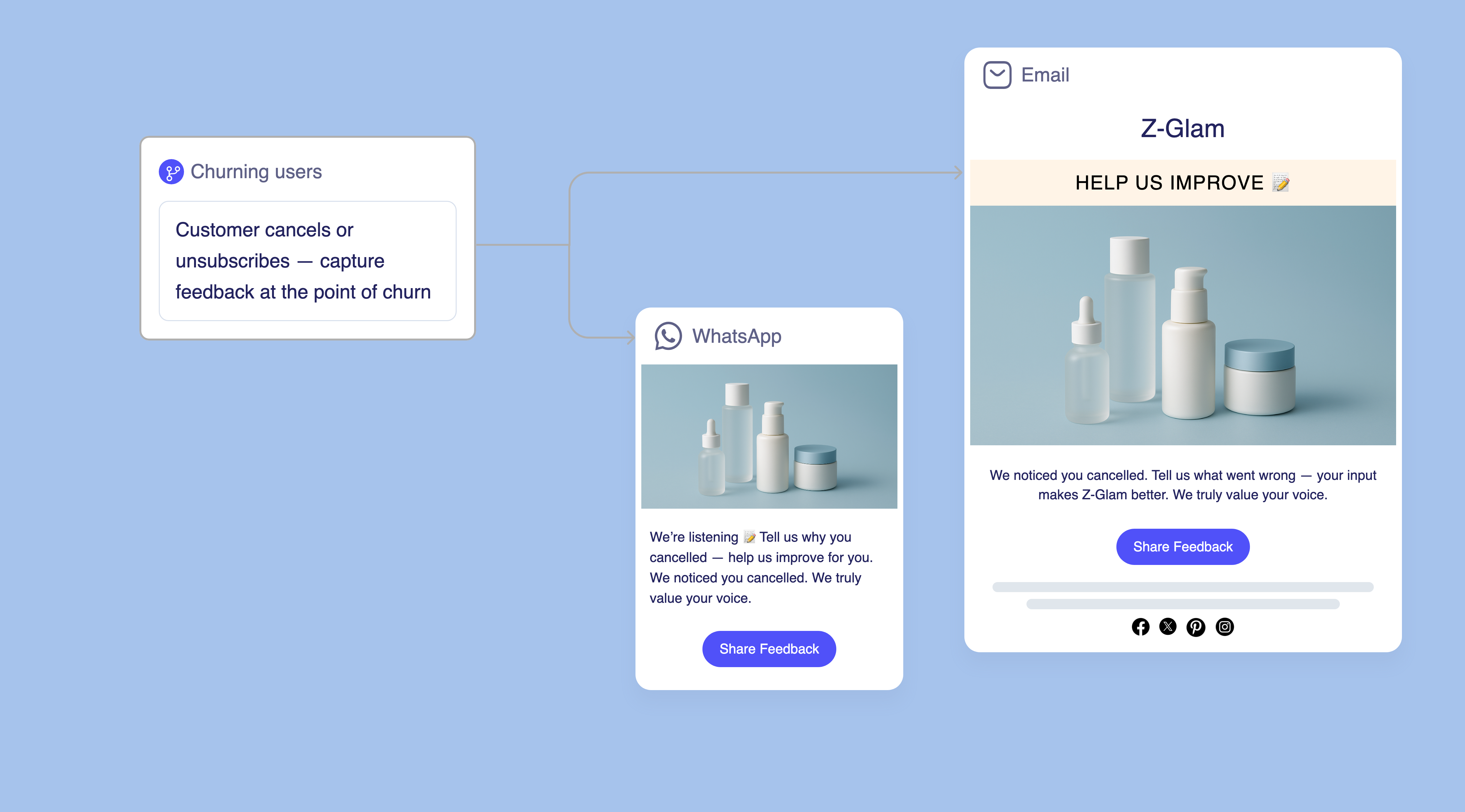
Exit Feedback Campaigns
Capture insights from customers at the moment they churn, and use feedback to reduce future drop-offs.

What are Exit Feedback Campaigns?
Exit Feedback Campaigns trigger when a customer unsubscribes, cancels, or shows strong signs of churn. Instead of letting them leave silently, brands prompt a quick feedback form or message to understand why they’re exiting. This data helps identify pain points, improve customer experience, and even win some customers back with the right intervention.
Why Exit Feedback Campaigns Matter

Challenges

Opportunities
Outcomes
Better Understanding of Churn Reasons
Improved Customer Experience Insights
Potential Last-Minute Retention Opportunities
Who is it for?
Audience
Exclusions
How it Plays Out
A sample sequence for this use case.
Help us improve! Tell us why you're leaving — it only takes 1 minute → [CTA]
Before you go, tell us what went wrong? We're listening → [Link]
Thank you for your feedback - we're working on improvements based on your input
Based on your feedback, here's something that might change your mind → [Reconsider]
Best Practices
- Keep feedback requests brief and focused on specific departure reasons rather than lengthy satisfaction surveys.
- Position feedback as helping improve the experience for others rather than just trying to retain the departing customer.
- Respond to feedback when possible and consider offering solutions that might address stated concerns.
Exit Feedback Campaigns Examples & Prompts
Channel Examples
Automate with Zenie Prompts
Zenie can help you automatically detect churn signals and send exit feedback nudges in real-time.
Explore Similar eCommerce Marketing Strategies
FAQs
What types of feedback questions work best for departing customers?
Focus on specific, actionable questions like "What's the main reason you're leaving?" or "What could we have done differently?" rather than broad satisfaction ratings. Multiple choice options with an "other" field often get higher response rates than open-ended questions alone.
Should exit feedback campaigns try to retain customers or just gather information?
Primarily focus on gathering honest feedback, but include optional retention offers based on specific feedback provided. Customers are more likely to give authentic responses if they don't feel the primary purpose is retention rather than genuine improvement.
How quickly should businesses respond to exit feedback?
Respond within 24-48 hours when possible, especially for feedback indicating solvable problems. Quick responses show that feedback is valued and may create opportunities for retention or future re-engagement.
What's the typical response rate for exit feedback requests?
Response rates vary widely based on customer relationship strength, feedback method, and industry context. Shorter, simpler feedback requests typically perform better than lengthy surveys, and customers with longer relationships are generally more likely to provide departure feedback than newer users.
How should exit feedback be used to improve customer experience?
Analyze feedback patterns to identify common churn drivers, product issues, or service gaps. Use insights to improve onboarding, fix product problems, enhance support, or adjust pricing strategies based on actual customer departure reasons.


